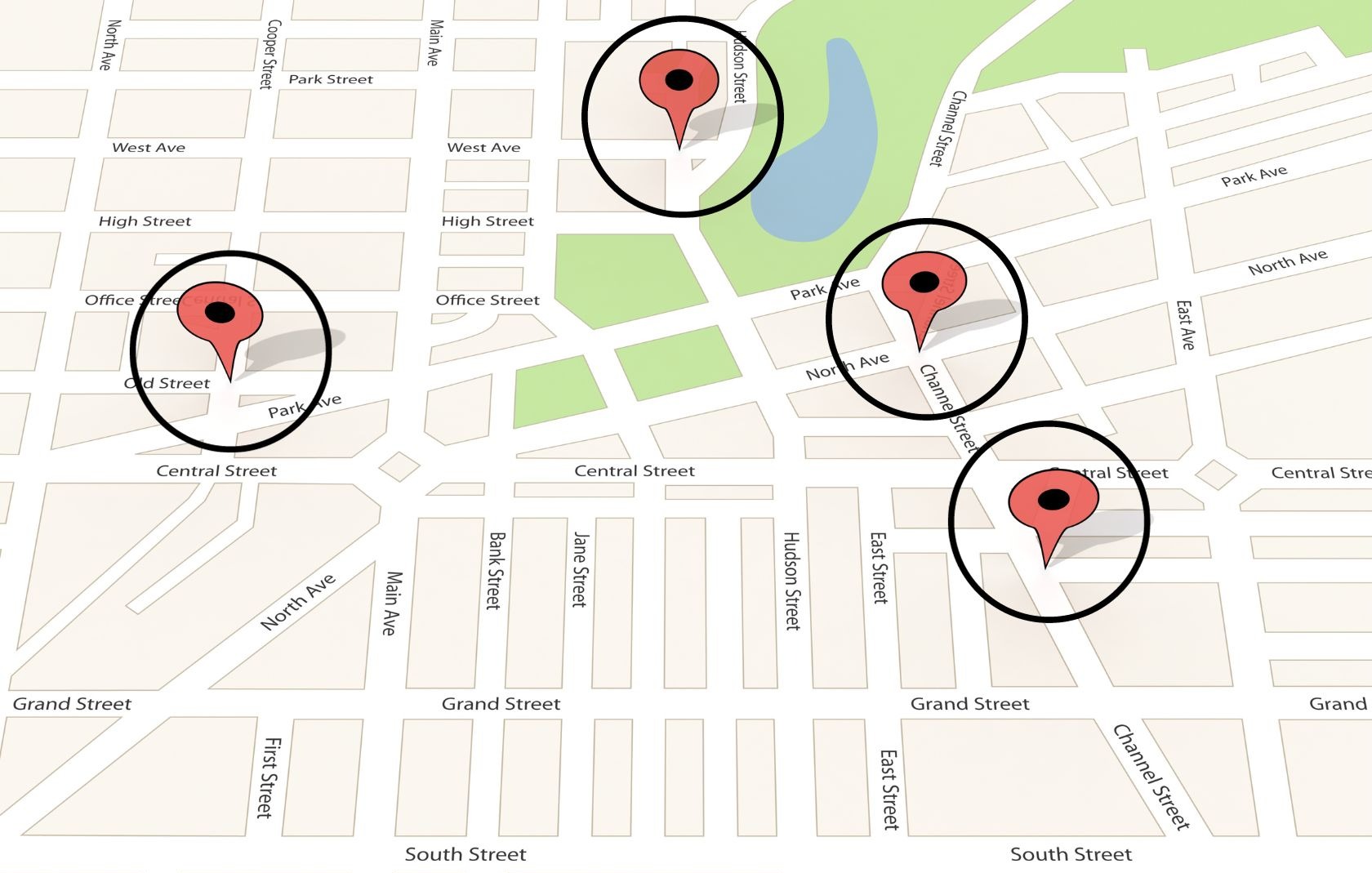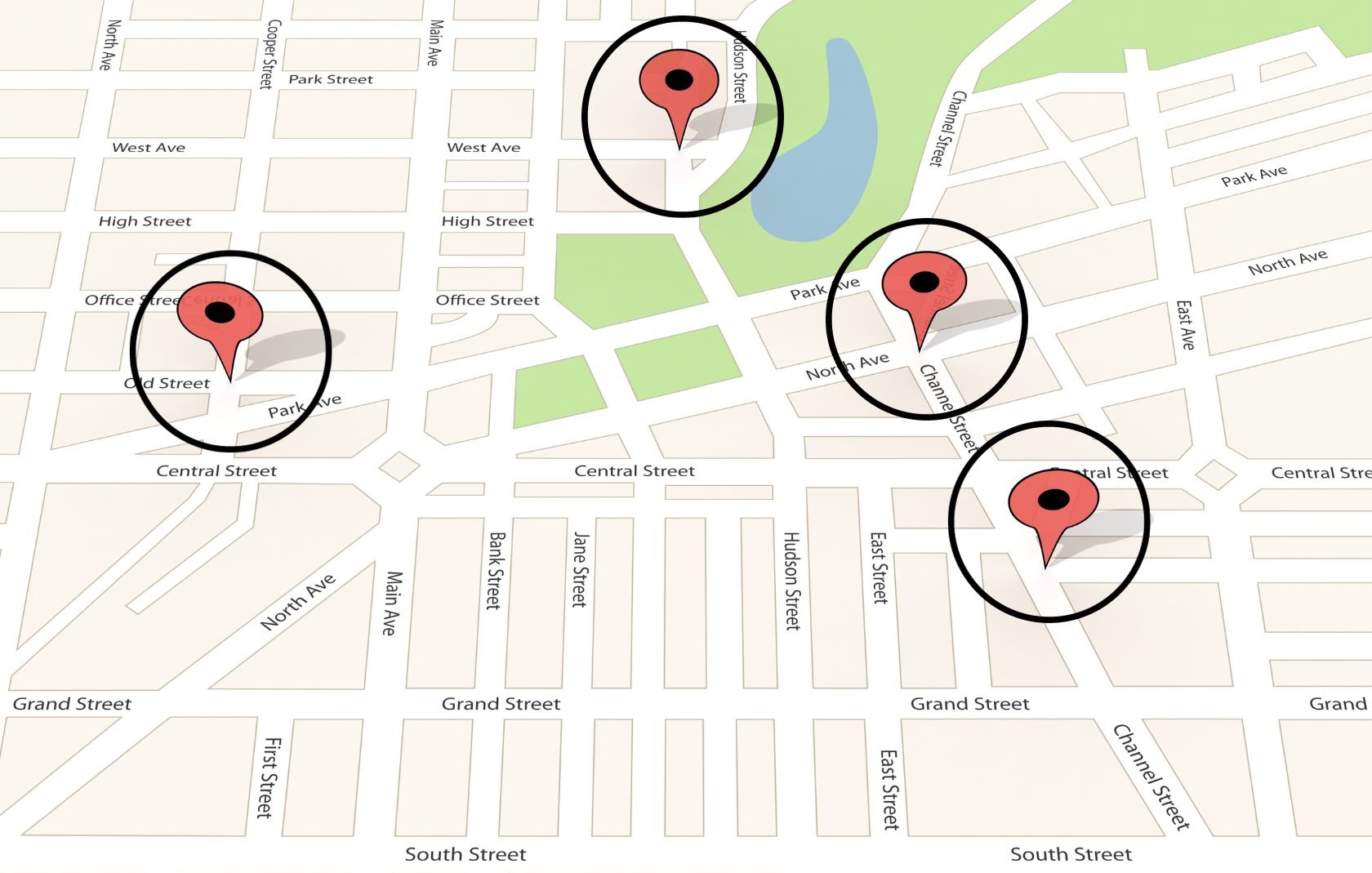Missouri Marketing Resource Blog

Geofencing 101: What It Is And How It Works

Geofencing targets customers based on their geographical location. By creating a virtual boundary around a specific location, businesses can push ads or notifications to customers within that boundary. In this blog post, we dive into understanding geofencing, how it works, where ads are displayed, its applicability across industries, measuring results with geofencing, and how it fits into overall marketing strategies.
In an era often characterized as "digital-centric," it's essential to examine the actual statistics behind the prevalence of digital devices. Recent data highlights the ubiquity of smartphones, which play a pivotal role in geofencing services: Globally, more people own a cell phone than a toothbrush. Approximately 95% of Americans own a cell phone, with 77% being smartphones (Source: Pew Research Center). The average American adult spends 4 hours and 15 minutes on their mobile phone daily (Source: Flurry Analytics study). 63% of U.S. consumers access the Internet via mobile devices (Source: Stone Temple Research). Smartphone usage is on the rise across all generations.
Understanding Geofencing
Geofencing is a location-based marketing strategy that leverages GPS, Wi-Fi, and cellular networks to create a virtual fence around a particular geographical area. By tracking the GPS coordinates of a user, businesses can push personalized ads to users that are within the virtual boundary. Geofencing leverages GPS and/or RFID to establish a virtual boundary, allowing businesses to display digital advertisements within the mobile apps of users located within that defined area. Studies have shown that geofencing effectively reaches targeted audiences as the ad is hyper-localized and contextually relevant to the user's current location.
How Geofencing works
Geofencing works by creating a virtual perimeter around a specific geographical location using GPS, Wi-Fi, and cellular network signals. This virtual perimeter is also called a "geofence." Once the geofence is set up, businesses can send personalized messages to mobile devices that enter or leave the virtual boundary.
Geofencing ads are showcased within free, location-aware mobile apps, offering a reach of over 20,000 such apps. An advanced feature, "geo-retargeting," enables ongoing ad delivery to smartphones previously exposed to the initial campaign, regardless of their current location.
Where Ads are Displayed
Ads can be displayed through various mediums, including mobile devices, smartwatches, digital billboards, social media platforms, and other online mediums. Geofencing ads are showcased within free, location-aware mobile apps, offering a reach of over 20,000 such apps. An advanced feature, "geo-retargeting," enables ongoing ad delivery to smartphones previously exposed to the initial campaign, regardless of location. Once the system detects that a user has entered the geofence, ads are pushed to their mobile device via an app, SMS, or email. The notification can be a simple reminder, discount coupon, or any other promotional content.
Geofencing's Applicability Across Business Industries
Imagine you're in downtown Columbia, Missouri, checking the weather on your smartphone, and an ad for Shakespeare's Pizza appears. You're a block away from Shakespeare's, and the ad has influenced your craving—that's the unique power of geofencing.
Geofencing has multiple applications across various business industries, including retail, hospitality, healthcare, entertainment, and travel. For example, a hotel chain can send targeted ads to users who have recently been in the vicinity of their hotel. The ads could offer them exclusives such as discounts on room rates, happy hours, and other offers that drive conversion. Another example is a hospital using geofencing to target healthcare facilities for nurse recruitment.
Measuring Results with Geofencing and Appropriate Metrics to Watch
The success of geofencing campaigns can be tracked by monitoring metrics like click-through rates, impressions, conversion rates, and app installs. These insights can help businesses understand the effectiveness of their messaging and make informed decisions in real time.
You can go beyond basic measurements and monitor important metrics for your geofencing campaign with advanced reporting metrics that provide clear differentiation:
-
Transparent ad placement:
Refers to the practice of clearly disclosing the location and format of advertisements to users or viewers.
-
Clicks View-Throughs:
This represents the number of times users click on an ad and then complete a desired action on the advertiser's website or landing page.
-
Hovers:
Refers to the action of moving the cursor over an element on a webpage or digital interface without clicking.
-
Digital Lift (available after 90 days):
Measures the increase in brand or product awareness, consideration, or preference resulting from digital advertising campaigns over 90 days.
-
Foot traffic attribution (in high foot traffic scenarios):
Refers to the process of attributing or assigning the impact of a digital advertising campaign to an increase in physical store visits or foot traffic, particularly in scenarios with high levels of pedestrian activity.
Geofencing is the veteran marketing strategy of all time for businesses, as it has proved its effectiveness in reaching targeted audiences while reducing marketing budgets. As businesses continue to explore new and innovative ways to reach customers, geofencing is a tool that should not be overlooked. That said, businesses should also set clear goals, monitor metrics diligently, and continually refine their geofencing campaigns to reap maximum benefits.
Originally published 2018. Updated 1/11/2024 for accuracy and freshness.



